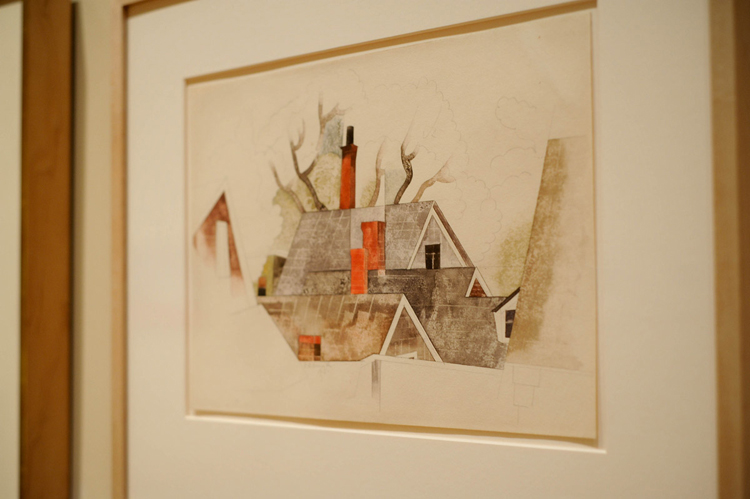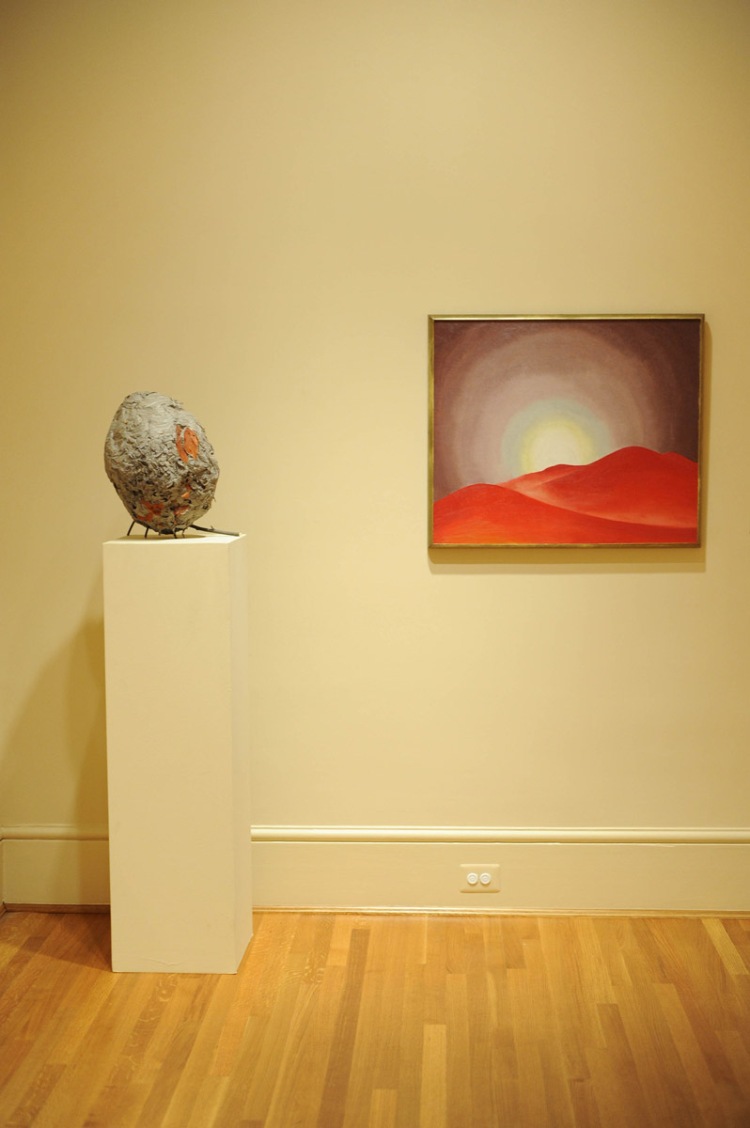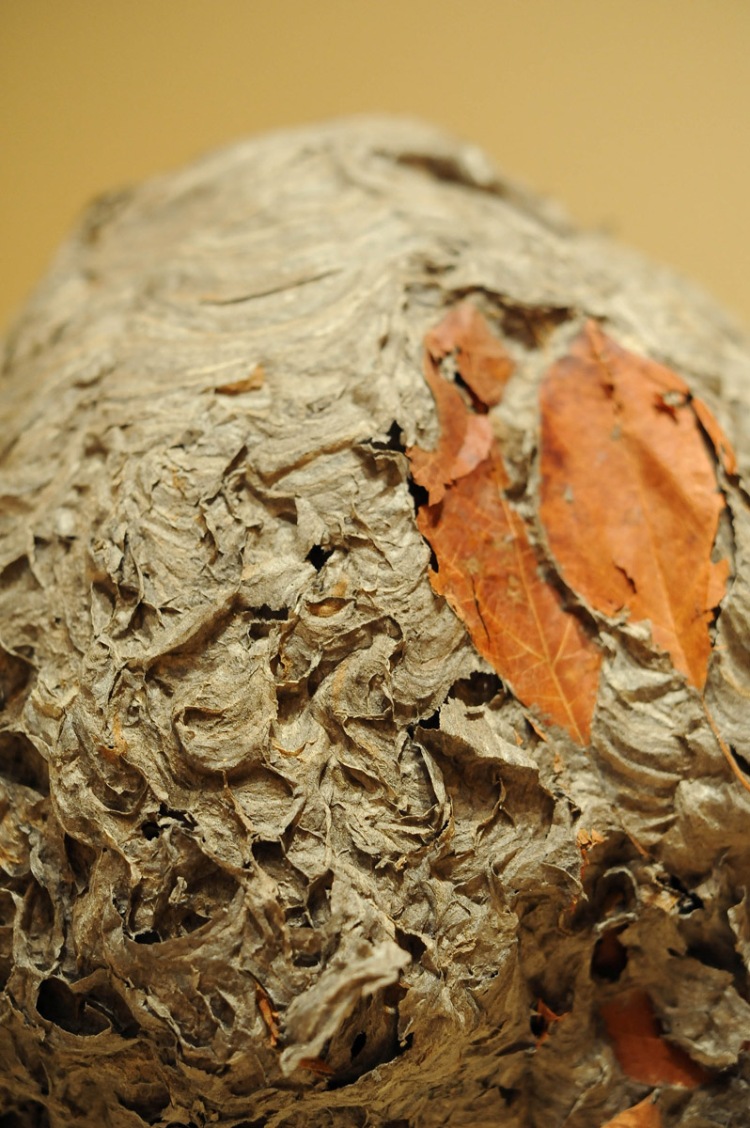
(Left) Red Chimneys, 1918, by Charles Demuth alongside photographs by Alfred Stieglitz. (Right) Albert Pinkham Ryder’s Macbeth and the Witches, mid- 1890’s. Photos: Joshua Navarro
Edited to add: This is the fifth in a series of posts from University of Virginia graduate student Tom Winters on his class’s experience installing works from our permanent collection in the Main Gallery. See parts one, two, three, and four.
After several weeks deliberating over wall texts and agonizing over potential substitutions that we might effect within our ensemble of works, this week finally sees some action. You will notice fresh changes in our gallery space. Our wall texts continue to accrete, each one composed with the aim of establishing links between artist, work, and aspects of modernism. More exciting, however, are the two new artworks that have joined the exhibition. As their addition is necessarily accompanied by the removal of other works, the process has been slightly bittersweet. But only slightly. The team feels satisfied that, in the final balance, our gallery certainly has changed for the better.
First, we’ve added Albert Pinkham Ryder’s Macbeth and the Witches (mid-1890s or later). It is the opening work in our narrative, our research having repeatedly proven Ryder to be a key progenitor of American modernism. To make room for the Ryder, we removed two works by Stuart Davis, an artist whose work was hard to give up but lost out in the final reckoning. Ultimately our group did not find that the works by Davis available to us best represent his quality. Sorry Mr. Davis, we still think you’re great.

Charles Demuth, Red Chimneys, 1918, Watercolor and graphite pencil on medium-weight, medium-textured, off-white, …; 10 1/8 x 14 in.; 25.7175 x 35.56 cm. (sight). Acquired 1925.
Our second addition is Charles Demuth’s Red Chimneys (1918). Demuth’s association with Alfred Stieglitz, one of our seminar’s protagonists, led us to feel that he should be included in our narrative. His work replaces Henri Rousseau’s The Pink Candle (1908). Though Rousseau undoubtedly had some measure of influence on the development of modernism in America, our group decided that his small still life was not contributing much to the theme of our exhibition, pleasing as the piece may be.
Now we’re working on assembling a case of books, catalogues, and Duncan Phillips’s letters. More to come on that in the upcoming weeks.
Tom Winters, UVa graduate student, Department of Art History





